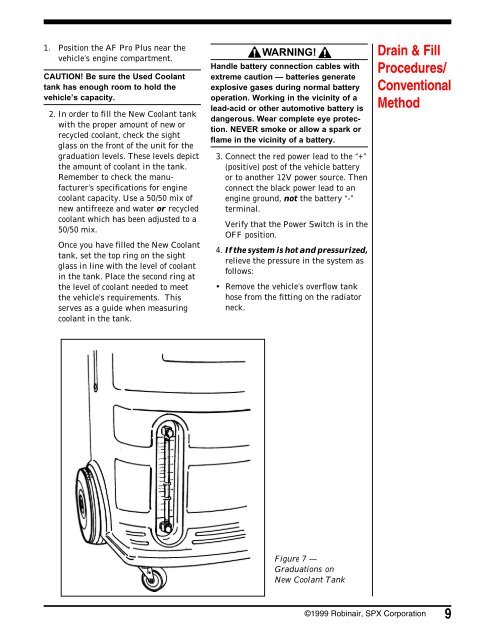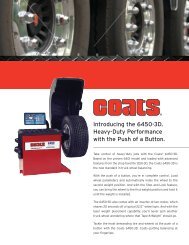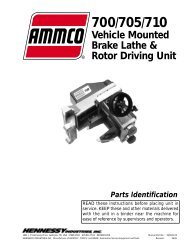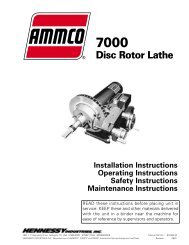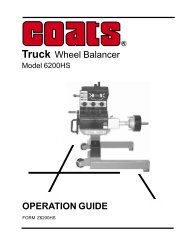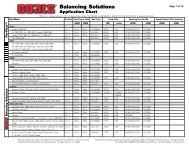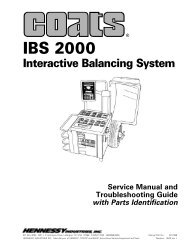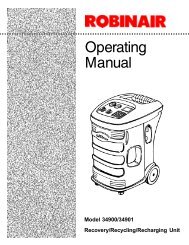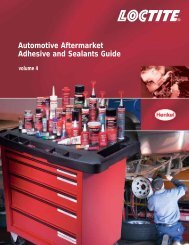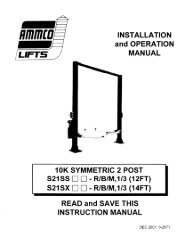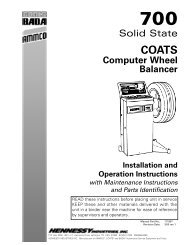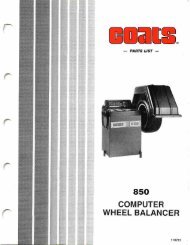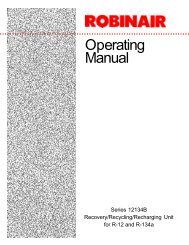Robinair 75650 Coolant Recycler - NY Tech Supply
Robinair 75650 Coolant Recycler - NY Tech Supply
Robinair 75650 Coolant Recycler - NY Tech Supply
Create successful ePaper yourself
Turn your PDF publications into a flip-book with our unique Google optimized e-Paper software.
1. Position the AF Pro Plus near the<br />
vehicle’s engine compartment.<br />
CAUTION! Be sure the Used <strong>Coolant</strong><br />
tank has enough room to hold the<br />
vehicle’s capacity.<br />
2. In order to fill the New <strong>Coolant</strong> tank<br />
with the proper amount of new or<br />
recycled coolant, check the sight<br />
glass on the front of the unit for the<br />
graduation levels. These levels depict<br />
the amount of coolant in the tank.<br />
Remember to check the manufacturer’s<br />
specifications for engine<br />
coolant capacity. Use a 50/50 mix of<br />
new antifreeze and water or recycled<br />
coolant which has been adjusted to a<br />
50/50 mix.<br />
Once you have filled the New <strong>Coolant</strong><br />
tank, set the top ring on the sight<br />
glass in line with the level of coolant<br />
in the tank. Place the second ring at<br />
the level of coolant needed to meet<br />
the vehicle's requirements. This<br />
serves as a guide when measuring<br />
coolant in the tank.<br />
WARNING!<br />
Handle battery connection cables with<br />
extreme caution — batteries generate<br />
explosive gases during normal battery<br />
operation. Working in the vicinity of a<br />
lead-acid or other automotive battery is<br />
dangerous. Wear complete eye protection.<br />
NEVER smoke or allow a spark or<br />
flame in the vicinity of a battery.<br />
3. Connect the red power lead to the “+”<br />
(positive) post of the vehicle battery<br />
or to another 12V power source. Then<br />
connect the black power lead to an<br />
engine ground, not the battery “-”<br />
terminal.<br />
Verify that the Power Switch is in the<br />
OFF position.<br />
4. If the system is hot and pressurized,<br />
relieve the pressure in the system as<br />
follows:<br />
• Remove the vehicle’s overflow tank<br />
hose from the fitting on the radiator<br />
neck.<br />
Drain & Fill<br />
Procedures/<br />
Conventional<br />
Method<br />
Figure 7 —<br />
Graduations on<br />
New <strong>Coolant</strong> Tank<br />
©1999 <strong>Robinair</strong>, SPX Corporation<br />
9


